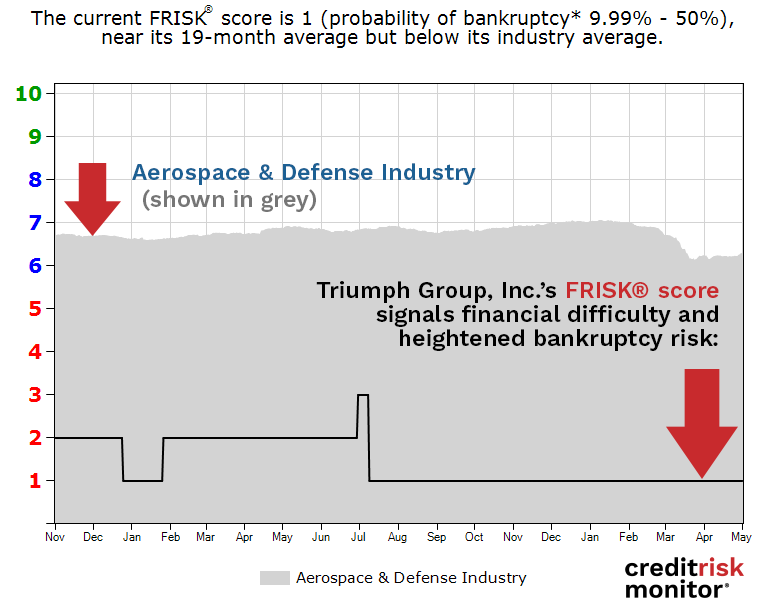Triumph Group, Inc.'s fight to stave off bankruptcy will be a major item to watch for counterparties and shareholders alike in the coming months.
The Pennsylvania-based aerospace manufacturer's FRISK® score has been grounded at a "1" for all of 2020 thus far:

A reminder that the FRISK® score, which blends stock market volatility data, bond agency ratings, financial ratios and crowdsourced click patterns from CreditRiskMonitor subscribers, has proven to be 96% accurate in predicting public company bankruptcy within a 12-month time horizon.
Suffice it to say, its time that you take a deeper look at Triumph Group if the company is in your portfolio. Download the free report to learn more.
Our FRISK® Score model incorporates four powerful risk inputs:
- “Merton”-type model of stock market capitalization and volatility
- Financial ratios, including those used in the Altman Z”-Score Model
- Agency ratings
- Website click pattern data from CreditRiskMonitor® subscribers, representing key credit decision-makers at nearly 40% of current Fortune 1000 companies plus thousands of other large companies worldwide
Since the start of 2017, the FRISK® Score’s rate of success in capturing public company bankruptcy is 96%. In any given year, you can count on one hand the times we miss – and in those outlier cases, the circumstances deal with unusual, unforeseen events such as natural disasters and CEO fraud.
Download the free report to learn more.
About High Risk Reports
Our High Risk Reports feature companies that are exhibiting a significantly high level of financial distress, as indicated by our proprietary FRISK® Score.
The reports highlight the factors that have pushed a company's score lower on the "1" (worst) to "10" (best) FRISK® Score, which is 96% accurate in predicting bankruptcy over a 12-month period. The High Risk Reports also includes analysis on financial indicators such as the company’s DBT index, stock performance, financial ratios and how it is performing relative to its industry peers.
The ultimate goal of the High Risk Report series is two-part: provide an early warning for those doing business with an increasingly distressed company and inform of the many signals that should be examined when assessing financial risks.